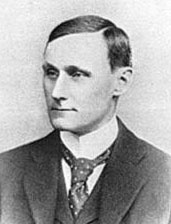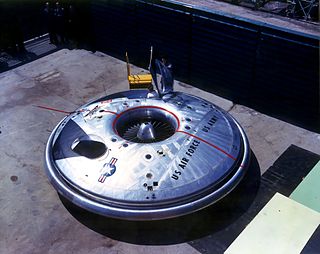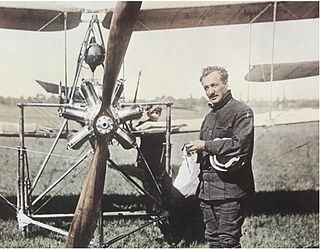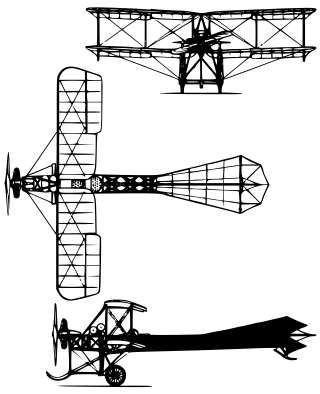Related Research Articles

An aircraft is a vehicle that is able to fly by gaining support from the air. It counters the force of gravity by using either static lift or the dynamic lift of an airfoil, or, in a few cases, direct downward thrust from its engines. Common examples of aircraft include airplanes, helicopters, airships, gliders, paramotors, and hot air balloons.

A vertical take-off and landing (VTOL) aircraft is one that can take off and land vertically without relying on a runway. This classification can include a variety of types of aircraft including helicopters as well as thrust-vectoring fixed-wing aircraft and other hybrid aircraft with powered rotors such as cyclogyros/cyclocopters and gyrodynes.

A tiltrotor is an aircraft that generates lift and propulsion by way of one or more powered rotors mounted on rotating shafts or nacelles usually at the ends of a fixed wing. Almost all tiltrotors use a transverse rotor design, with a few exceptions that use other multirotor layouts.

Percy Sinclair Pilcher was a British inventor and pioneer aviator who was his country's foremost experimenter in unpowered flight near the end of the nineteenth century.

The Fairey Rotodyne was a 1950s British compound gyroplane designed and built by Fairey Aviation and intended for commercial and military uses. A development of the earlier Fairey Jet Gyrodyne, which had established a world helicopter speed record, the Rotodyne featured a tip-jet-powered rotor that burned a mixture of fuel and compressed air bled from two wing-mounted Napier Eland turboprops. The rotor was driven for vertical takeoffs, landings and hovering, as well as low-speed translational flight, but autorotated during cruise flight with all engine power applied to two propellers.

A triplane is a fixed-wing aircraft equipped with three vertically stacked wing planes. Tailplanes and canard foreplanes are not normally included in this count, although they occasionally are.

An aircraft constructed with a push-pull configuration has a combination of forward-mounted tractor (pull) propellers, and backward-mounted (pusher) propellers.

The Avro Canada VZ-9 Avrocar is a VTOL aircraft developed by Avro Canada as part of a secret U.S. military project carried out in the early years of the Cold War. The Avrocar intended to exploit the Coandă effect to provide lift and thrust from a single "turborotor" blowing exhaust out of the rim of the disk-shaped aircraft. In the air, it would have resembled a flying saucer.

A helicopter is a type of rotorcraft in which lift and thrust are supplied by horizontally spinning rotors. This allows the helicopter to take off and land vertically, to hover, and to fly forward, backward and laterally. These attributes allow helicopters to be used in congested or isolated areas where fixed-wing aircraft and many forms of short take-off and landing (STOL) or short take-off and vertical landing (STOVL) aircraft cannot perform without a runway.

Armand Dufaux (1883–1941) was a Swiss aviation pioneer who became famous for flying the length of Lake Geneva in 1910.

The Boeing GA-1 was an armored triplane. Designed in 1919, it was powered by a pair of modified Liberty engines driving pusher propellers. The first of the Engineering Division's heavily armored GAX series aircraft, the ponderous airplane was intended to strafe ground troops while remaining immune to attack from the ground as well as from other enemy aircraft. Its armor resulted in an excessive five-ton weight.

The Roe I Biplane was the first powered aircraft to be designed, built, and flown in England. Designed in an attempt to claim a prize offered by the Brooklands Automobile Racing Club, it was designed and built by Alliott Verdon Roe, who based it on a powered model with which he had won a Daily Mail prize of £75 at Alexandra Palace in April 1907. This prize was substantially larger: the club committee was offering £2,500 for the first person to fly a circuit of their three-mile (4.8 km) race track by the end of the year. In addition the Daily Graphic was offering a £1,000 prize for a flight of more than a mile (1.6 km).

The Roe I Triplane was an early aircraft designed and built by A.V. Roe which was the first all-British aircraft to fly..

The British Army Aeroplane No 1 or sometimes Cody 1 was a biplane built by Samuel Franklin Cody in 1907 at the Army Balloon Factory at Farnborough. It made the first recognised powered and sustained flight in the United Kingdom on 16 October 1908.

The Dufaux 4 was an experimental aircraft built in Switzerland in 1909 and which was originally constructed as an unnamed biplane, the third aircraft constructed by the brothers Armand and Henri Dufaux. The aircraft was entirely conventional for the era - a two-bay biplane with unstaggered wings of equal span and a triangular-section fuselage. Construction began in mid-September 1909 and work proceeded rapidly, as the brothers hoped to claim a CHF 1,000 prize put up by the Automobile Club de Suisse for the first Swiss-built aircraft to fly a 1 km closed-circuit.
The Sopwith Snark was a British prototype fighter aircraft designed and built towards the end of the First World War to replace the RAF's Sopwith Snipes. A single engined triplane, the Snark did not fly until after the end of the war, only three being built.

The Dufaux 5 was a two-seat airplane built in 1910–11 by French-Swiss aviation pioneers Henri and Armand Dufaux.
In aviation, a multiplane is a fixed-wing aircraft-configuration featuring multiple wing planes. The wing planes may be stacked one above another, or one behind another, or both in combination. Types having a small number of planes have specific names and are not usually described as multiplanes:

The Dornier Do 29 was an experimental aircraft developed by Dornier Flugzeugwerke and the Deutsche Versuchsanstalt für Luftfahrt in the 1950s, used to test a tilting-propeller system for Vertical/Short Take-Off and Landing (V/STOL) aircraft. The concept was proved successful in flight testing; however, no further development of the system or aircraft was proceeded with, and at the conclusion of its test program the Do 29 was retired.

The Berliner Helicopter is a series of experimental helicopters built by Henry Berliner between 1922 and 1925. The helicopters had only limited controllability but were the most significant step forward in helicopter design in the US, until the production of the Vought-Sikorsky VS-300 helicopter in 1940. The 1922 flights of the Berliner and the de Bothezat H1 were the first by manned helicopters.
References
- Taylor, Michael J. H. (1989). Jane's Encyclopedia of Aviation. London: Studio Editions. p. 347.
- World Aircraft Information Files. London: Bright Star Publishing. pp. File 892 Sheet 47.
- Geneva aviation pioneers